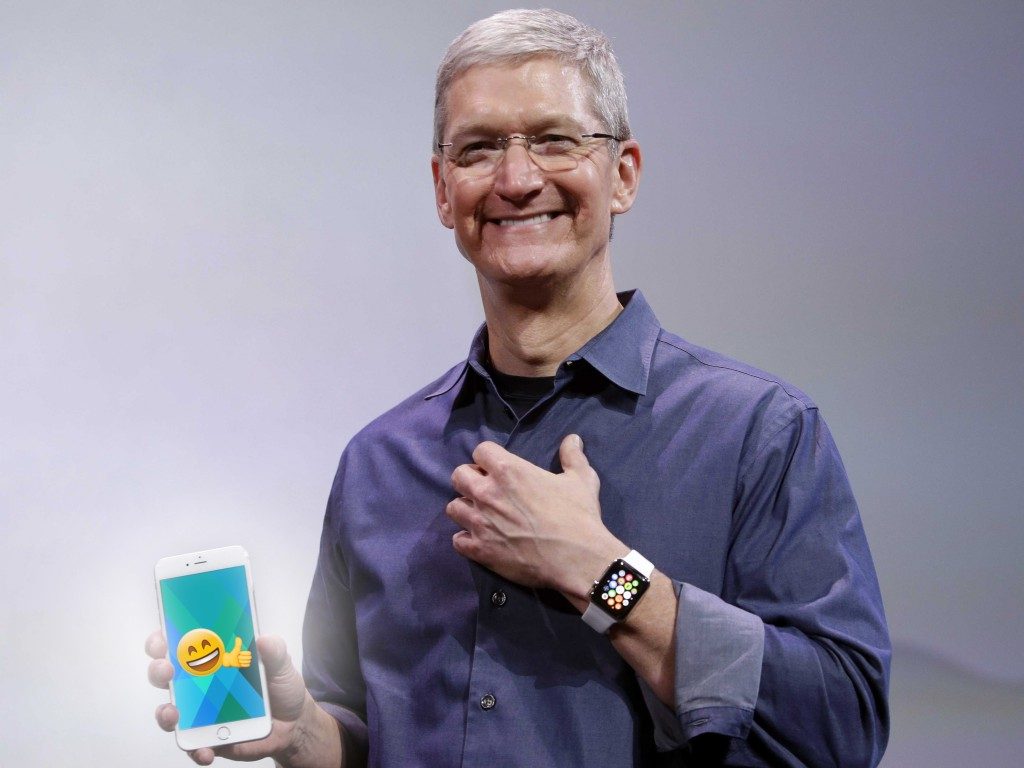
Most rumours about the phone were just a big joke, CEO says
By Jake Wray, Senior Columnist
Journalists, software developers, and tech analysts gathered on the morning of September 7 at the Bill Graham Civic Auditorium in San Francisco for what they thought would be the standard Apple Inc. fall press event announcing the latest iPhone. Instead, they witnessed a profound speech that plotted an entirely new course for Apple.
“It’s time to cut the bullshit,” said Jim Took, Apple’s CEO, as he took the stage.
“Apple has become obsessed with the pursuit of revenue, to the detriment of our products. We continue to charge premium prices for the iPhone, but we focus our development on crummy gimmicks like Apple Pay and Siri.”
“If I’m being totally honest, I was blind to our mistakes until one weekend last October, when I took a liberal dose of mushrooms out in the desert. It was wild, man. I was able to reflect upon myself, and the company I run, from a totally new perspective. I realized that we had heads up our asses in Cupertino. We were totally blind to the experiences of everyday iPhone users.”
“All the rumours you’ve heard over the past year about the iPhone 7 have been completely false. There won’t be a big ugly dual-camera, and we were just kidding around with all that nonsense about removing the headphone jack. We have been deliberately spreading misinformation to conceal our true goal: to realize the potential of mobile computing by designing the best possible iPhone. In other words, we stopped letting the marketing team drive our development, and handed the reins back to the engineers,” he said.
“I’m proud to introduce the fastest, the most customizable, and the most ethical iPhone yet. The iPhone 7.”
Typically, when Took finally announces the new phone at these annual events, the audience goes wild with cheers and applause. This year, the auditorium was silent. Hands were clasped over mouths, and asses were on seat edges as Took, along with other Apple executives like Senior VP Geddy Q and Chief Design Officer Tony Stive, unveiled an iPhone that violates many of Apple’s core ideologies.
Physically the iPhone 7 resembles the iPhone 6S, with a similar chassis and 4.7-inch screen (though Apple has ditched the “Plus” model this year). Under the hood, the iPhone 7 is significantly more powerful than the iPhone 6S, featuring a lightning-fast, six-core A10 processor, 8GB of RAM, and 512GB of solid-state storage. For the first time ever, Apple has included a micro-SD slot so users can easily expand storage.
At one point in the presentation, Stive drew gasps by openly admitting that Apple used to practice planned obsolescence.
“But no more,” he said, promising that the iPhone 7 is “built to last, so your battery won’t crap out after, like, a year-and-a-half.”
Also announced were significant changes to the iPhone’s operating system. iOS will now be open-source, allowing anyone to customize the software (a luxury previously available, in a limited form, only to those who could jailbreak their iPhone). iPhones will no longer be locked into running iOS, either. The iPhone 7 allows for installation of any compatible operating system, such as Google’s Android OS or Microsoft’s Windows 10.
In the pandemonium that ensued after the presentation ended, the Other Press talked with several tech analysts among the crowd. Many were skeptical of the radical changes undertaken by Apple.
“This has to be some kind of bizarre prank,” said Tony Callaghan, a Portland-based tech blogger.
“Apple would never, ever, in a million years, release the source code for iOS. I literally cannot believe what I just heard in there.”
Some analysts, like Toronto-based freelance journalist Suleman Greeg, were more optimistic.
“Get the camera up close to my eye so they can see my tears,” he said. “I’m weeping because what Jim Took and Apple have done here is revolutionary. They have thrown consumerism and greed right out the window. This is the start of a new era, in the computing world and in the business world. This is fundamentally a good thing.”

